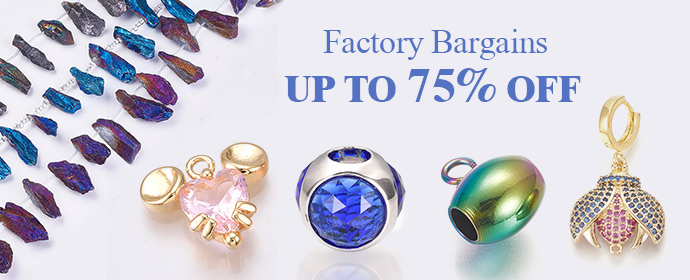Any cosmetic kit must have concealers, especially for people who want a perfect complexion. Although concealers can be used for many other things, such as masking blemishes or dark circles, their ability to hide dark spots is their most remarkable usage. Whether brought on by sun damage, acne scars, or hyperpigmentation, dark patches can give the skin an uneven appearance and detract from its smooth, glowing appearance. Although the appropriate concealer may do wonders, it’s important to know what to look for when selecting the ideal one for this task. Let’s examine the key elements to consider while selecting the pro concealer for dark spots.
1. Full-Coverage Formulas: Why They Are Essential
Coverage is the most important consideration when selecting the pro concealer to hide dark patches. The best option for dark spot coverage is a full-coverage formula. Full-coverage concealers, as opposed to sheer or light-coverage ones, are made to blend in with the skin and cover flaws. The thicker viscosity of this kind of concealer helps to form an opaque barrier that covers the dark area without letting it show through.
In the product descriptions, look for concealers that say “full coverage” or “high coverage.” Areas that require a thicker application can be covered with these concealers without seeming cakey or highlighting texture. For people who have dark spots that are difficult to remove and need more than a touch-up, full-coverage concealers are the best option.
2. Choosing the Right Formula: Liquid, Cream, or Stick?
Concealers come in a variety of formulas, each with its benefits. Understanding the differences between these formulas can help you choose the one that best suits your needs:
- Liquid Concealers: These are the most common type of concealer and come in various coverage levels. A liquid concealer with a thicker consistency will offer the best coverage for dark spots. This formula is easy to blend and can be layered for additional coverage if necessary. Liquid concealers also work well for most skin types, including oily and combination skin, as they tend to be more lightweight.
- Cream Concealers: Cream concealers offer more coverage than liquids and are great for covering dark spots because of their dense, opaque texture. They provide a smooth finish and tend to be more moisturizing than liquid formulas. Cream concealers are especially beneficial for dry or mature skin, as they won’t accentuate fine lines and dry patches.
- Stick Concealers: Stick concealers are compact and portable, making them a great option for quick touch-ups. While some stick concealers can be drying, there are also hydrating formulas that provide good coverage and a long-lasting finish. Stick concealers work best for normal to dry skin types and are often used for spot treatment on specific areas of the face.
3. The Importance of Pigment and Undertone
The concealer’s hue and undertone matter just as much as its coverage when it comes to hiding black patches. The effectiveness of concealing dark spots can be significantly improved by using the pro concealer with the appropriate tint and undertone.
- Selecting the Correct Shade: The concealer should be one or two shades lighter than your natural skin tone to cover dark spots properly. This will add some brightness to the space without highlighting the concealer too much. A concealer shade that is too dark won’t cover up the dark area well, while one that is too light can create an unnaturally sharp contrast.
- Undertone Considerations: For the best results, choose a concealer with an undertone that complements the undertone of your skin. If your skin has warm undertones, look for a concealer with a yellow or peach undertone, as these shades counteract the blue or purple hues of dark spots. For cool undertones, a concealer with a pink or peach undertone will work best. Neutral undertones can usually wear concealers with either a yellow or pink base, depending on the intensity of the dark spots.
4. Hydration and Texture: Key to a Natural Finish
A natural appearance that mixes in with your skin is what you desire when hiding dark spots. It’s crucial to take your concealer’s texture and hydration level into account in order to do this. In order to avoid the concealer sticking to dry areas or highlighting texture, a moisturizing formula is crucial, particularly if you have dry or mixed skin.
Choose a non-comedogenic concealer that won’t clog pores or provide extra shine if you have oily skin. Although matte-finish concealers could work well for oily skin, it’s crucial to make sure they still offer sufficient coverage to cover dark spots.
5. Application Tips for Maximum Coverage
Using the right application techniques can make all the difference when concealing dark spots. Here are some expert tips for achieving a flawless look:
- Prep the Skin: Before applying the pro concealer, ensure your skin is clean and moisturized. Using a primer can help create a smooth base, making it easier to apply the concealer and helping it last longer throughout the day.
- Apply with Precision: Use a small, dense brush or your fingertip to apply the concealer directly onto the dark spot. Pat the concealer gently using a tapping motion rather than rubbing it in. This helps to blend the product without disturbing the foundation or creating an uneven finish.
- Layer If Needed: If one layer of concealer doesn’t fully cover the dark spot, let it set for a minute or two and apply a second layer. Be cautious not to apply too much product at once, as this can lead to a cakey appearance.
- Blend with a Sponge: To achieve a seamless look, use a makeup sponge to blend the concealer into the surrounding skin. This helps to smooth out any harsh lines and creates a natural-looking finish.
6. Additional Tips for Long-Lasting Concealer
Concealers can sometimes fade or crease throughout the day, especially when covering dark spots. To help your concealer stay put for longer, consider these additional tips:
- Set with Powder: Lightly set the area with a translucent setting powder to prevent creasing and ensure the concealer stays in place. Be careful not to use too much powder, as it can create a dry or cakey look.
- Use a Setting Spray: To lock in your makeup and make it last longer, finish your routine with a setting spray. This can help the concealer stay put and prevent it from wearing off due to sweat or humidity.
- Avoid Touching Your Face: Touching your face can transfer oil and makeup, which may cause your concealer to fade or move. Be mindful to avoid touching or rubbing the area where you’ve applied concealer.
To read more blog: 4 Best Face Concealer Tips for a Youthful Appearance
Final Thoughts
It takes more than just selecting the pro concealer from the store to cover up dark patches. Coverage, formula, pigment, and texture are some of the elements that need to be carefully considered. You may get a smooth, even finish that successfully hides dark spots by choosing a full-coverage formula with a matching undertone, knowing which application methods work best, and utilizing setting products. You may achieve glowing, even skin that seems natural and youthful with the correct method.
Recommend0 recommendationsPublished in Makeup



